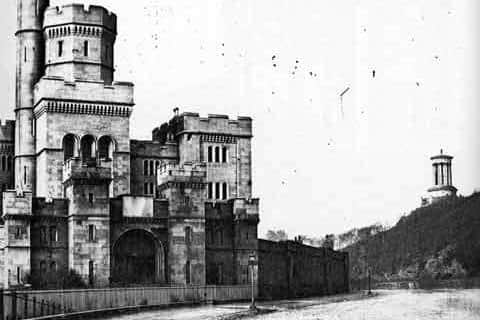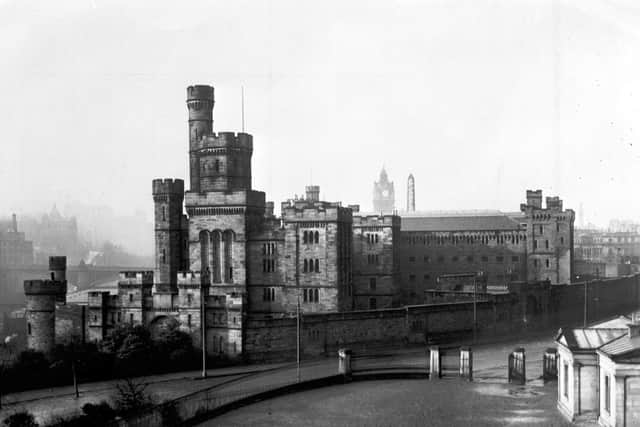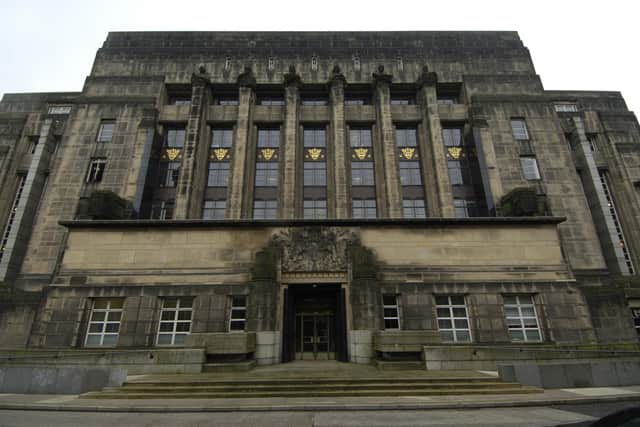Edinburgh crime news: Here is the history behind one of Scotland's most notorious jails, Calton Jail, where the buried bodies of hanged murderers remain
and live on Freeview channel 276
“It was by far the worst prison in Scotland; cold, silent and repellent. Its discipline was extremely harsh, and the diet atrocious.” Willie Gallacher.
On the east end of Princes St, at the foot of Calton Hill, sits a tall, imposing, dark building – St Andrew’s House. Behind it looms Arthur’s Seat, the Capital’s ever present guardian.
Advertisement
Hide AdAdvertisement
Hide AdUnder the concrete in the west car park of this building lie ten bodies. Ten lonely graves.
These belong to convicted murderers that were executed on that bleak spot, their desperate souls never to escape it.
St Andrew’s House is the site of Calton Jail, one of the most notorious jails in the country.
Dominating Edinburgh, it was, without a doubt, a spectacular building. It operated as a felons prison, and a debtors prison throughout its history.
Advertisement
Hide AdAdvertisement
Hide AdJules Verne himself described it as “resembling a small-scale version of a medieval town” and Lord Cockburn said that “it had been a piece of undoubted bad taste to give so glorious an eminence to a prison.”


This beauty appeared to have little impact on the inmates, one of whom, Willie Gallacher, said : ”It was by far the worst prison in Scotland; cold, silent and repellent. Its discipline was extremely harsh, and the diet atrocious.
“The one hour's exercise in the morning was the sole opportunity we had of seeing each other, when desperate attempts were made to exchange a whisper or two.
"For breakfast, we had thick porridge and sour milk. For dinner, soup and a piece of dry bread. And for supper, thick porridge and sour milk.”
Advertisement
Hide AdAdvertisement
Hide AdWillie was sent to jail for sedition during the First World War.


In 1930, the demolition of the dreaded site began. Bricks were used to build the Hopes Reservoir Dam in the Lammermuir Hills, and local pub, The Beehive Inn in the Grassmarket houses the Death Cell door.
Calton jail was replaced with Saughton Prison in the west of the city – now called HMP Edinburgh.
Among those encased in their concrete tomb in the government car park lie Eugene Marie Chantrelle, who was hanged on May 31 1878, for murdering his wife by gas poisoning.
Advertisement
Hide AdAdvertisement
Hide AdJessie King, was the last woman to be hanged in Edinburgh on March 11 1889.


She was what was knows as a 'baby farmer'. She cared for unwanted children, but was convicted for murdering some of them.
John Henry Savage cut a woman’s throat on Bridge Street in Leith in 1923 and Philip Murray, the last person to face the hangman's drop on October 30 1923.
Murray, on entering his home in Jamaica Street, found a man in his wife's bedroom. He pushed him through a top floor window to his death.
These people, and many others, met their fate at Calton Jail, the large, solid door to the death cell the last thing they would have seen before meeting their horrifying end.